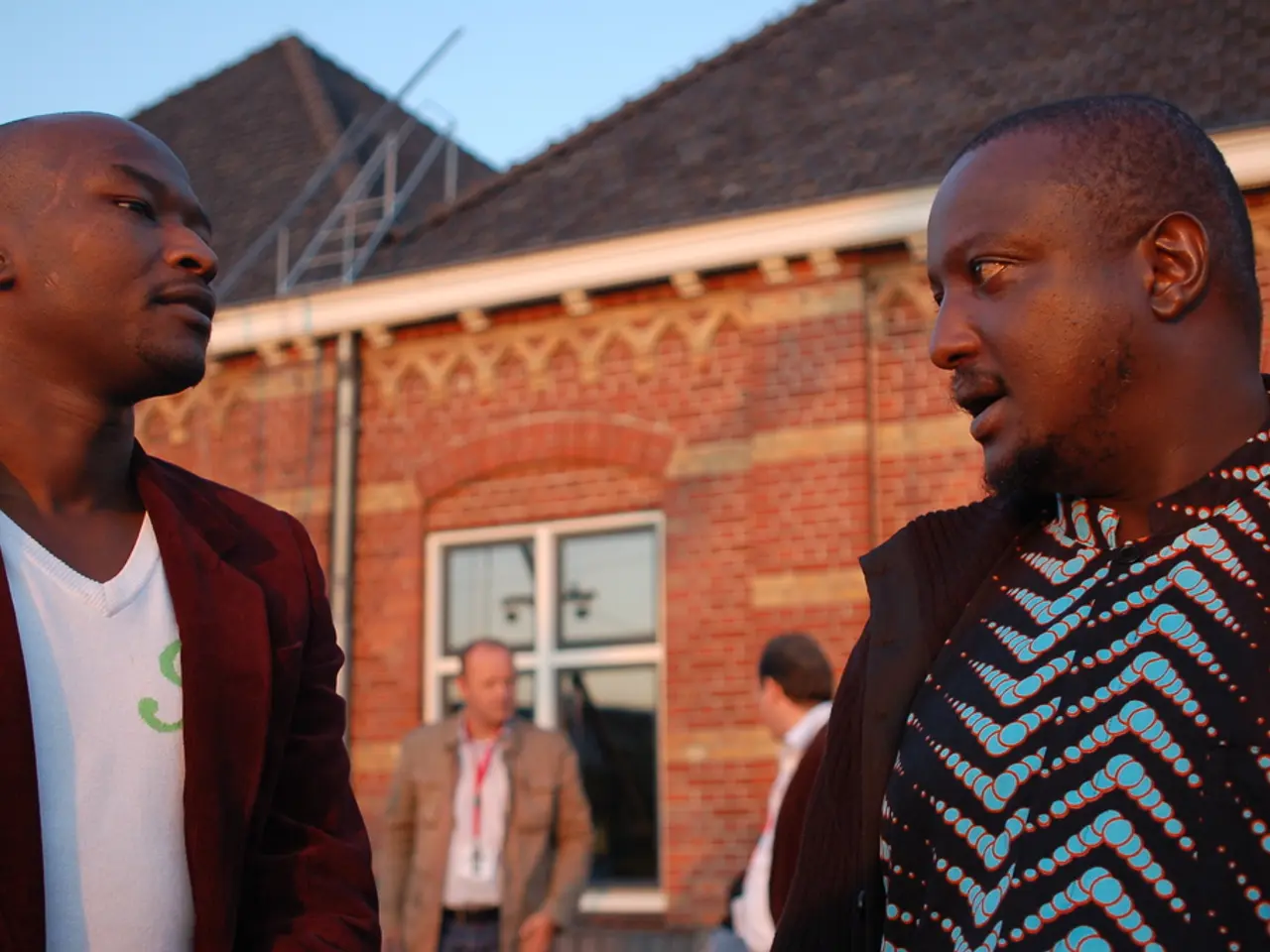Leading African Nations Employing Alliances for Rural Internet Connectivity (Top 7 List)
In a bid to improve internet access in remote rural regions, a combination of satellite broadband with existing land-based networks is proving to be an effective solution. This approach is being implemented in various African countries, with notable projects led by Ghana, South Africa, and several other nations.
Ghana's Rural Telephony Project, spearheaded by the Ghana Investment Fund for Electronic Communications, employs innovative technologies such as TV White Space, solar-powered towers, and satellite internet to expand network coverage in remote areas. South Africa's SA Connect program, in collaboration with major telecom companies, aims to bring broadband to remote communities, particularly focusing on schools and healthcare facilities. Local entrepreneurs are also boosting digital literacy efforts.
High infrastructure costs in remote areas pose a significant challenge in rural internet access across Africa. However, some of the most successful public-private partnerships (PPPs) in expanding rural internet access include those in Rwanda, Liberia, Madagascar, and broader West Africa. These partnerships leverage a combination of fiber networks, mobile technologies, satellite internet, and community access points.
Rwanda's PPPs and community-focused programs have been instrumental in expanding rural connectivity. The Gira ICT program fosters entrepreneurship by supporting village cybercafés and phone charging kiosks. The government also uses school computer labs with Wi-Fi as shared internet access points. The focus extends beyond infrastructure to digital literacy, helping farmers and small businesses use internet services.
Liberia has leveraged PPPs involving government, mobile operators, international donors, and private companies. For instance, the Cable Consortium of Liberia (CCL)—a partnership between the government and mobile operators—co-invested in the ACE submarine cable landing to provide international internet connectivity. Another model is the USAID-Google-CSquared partnership, where government support facilitated fiber backbone deployment by a private company.
CSquared is investing $125 million to deploy open-access, carrier-neutral fiber superhighways across West Africa, including Liberia and Togo. Their PPP approach engages governments and leverages economies of scale to build affordable and reliable broadband infrastructure that supports e-commerce, digital education, and startup ecosystems.
Madagascar’s Integrated Connectivity and Development PPPs combine existing fiber and mobile 3G/4G coverage with community ICT centers and digital agricultural services in rural areas. Community Information Kiosks (solar-powered hubs with internet access) and digital literacy programs (often with NGO involvement) are crucial components, enhancing both access and demand for internet services in rural communities.
These PPPs generally combine infrastructure investment, regulatory facilitation, funding from international development agencies, and community engagement to bridge the digital divide between urban and rural Africa effectively. They illustrate that success requires not just technology deployment but also demand stimulation and affordability measures.
In Uganda, rural internet connectivity has been expanded through partnerships with national regulators and private companies, utilizing a mix of fixed-line and wireless technologies, and solar-powered systems. Nigeria's partnerships are using innovative solutions like solar-powered base stations and community networks to bring internet access to remote regions, enabling improvements in education, healthcare, and local economies.
Kenya's efforts to improve rural internet access include the Universal Service Fund, digital literacy programs in schools, and the use of solar-powered base stations, mesh networks, and LEO satellite links. Starlink's low-earth orbit satellites provide high-speed internet in areas where conventional systems can't reach.
However, outdated policies, such as limited spectrum allocation, slow licensing processes, minimal infrastructure sharing, and cross-border connectivity problems, are barriers to progress in rural internet access. Revising regulations, such as infrastructure sharing mandates, simplified licensing, and tax incentives, can help reduce setup costs and accelerate project approvals.
Geography also plays a significant role in complicating internet deployment, with mountain ranges, dense forests, and scattered rural communities making network infrastructure a technical and logistical challenge. New funding models, advanced technologies, and policy updates can help address these challenges and drive rural internet access forward in the coming years.
- South Africa's SA Connect program, in collaboration with major telecom companies, aims to bring broadband not only to remote communities but also to enhance education and self-development opportunities through the focus on schools and healthcare facilities.
- Kenya's efforts to improve rural internet access include the use of technology such as solar-powered base stations, mesh networks, and low-earth orbit satellites from Starlink, enhancing general news access in remote regions and supporting various sectors like education, healthcare, and local economies.




